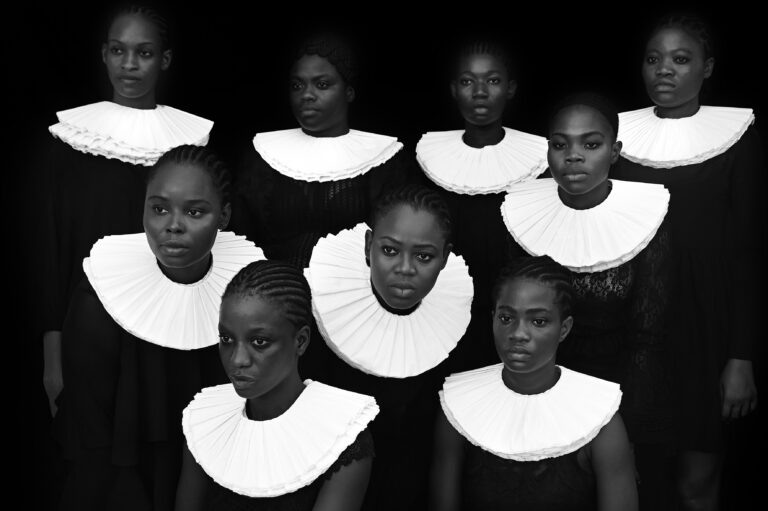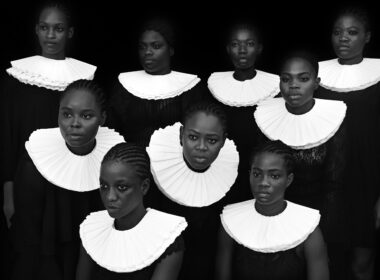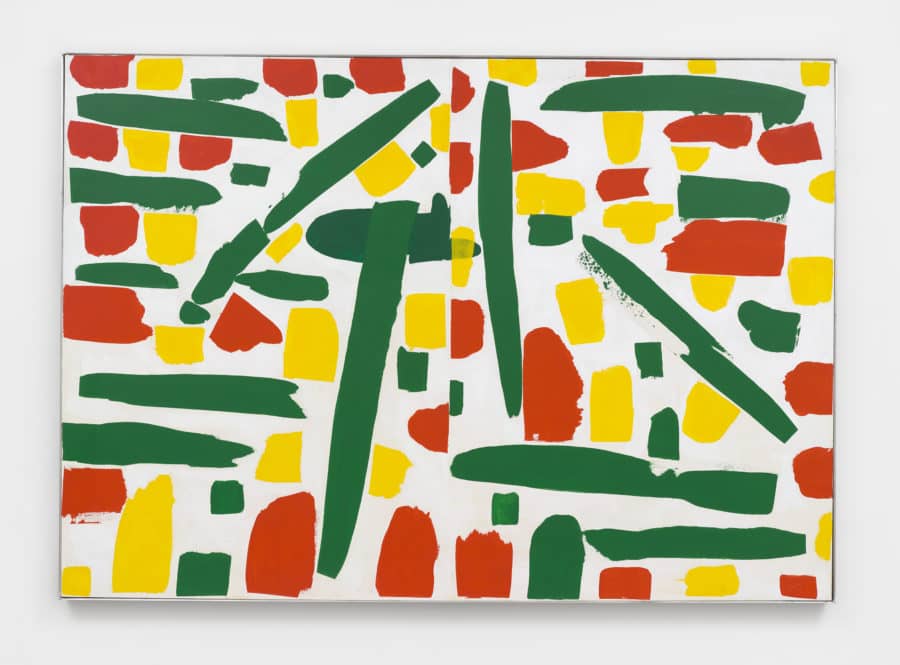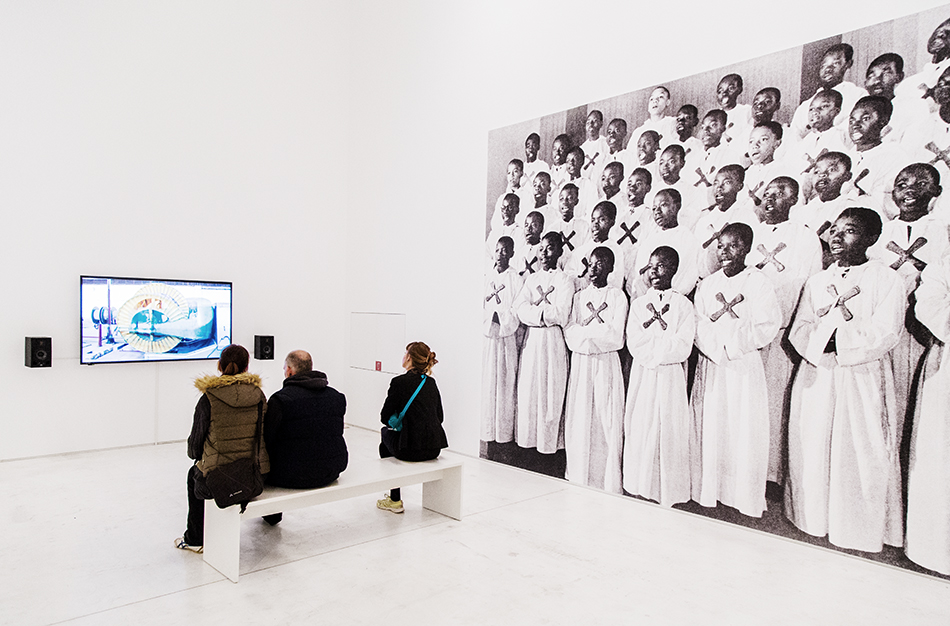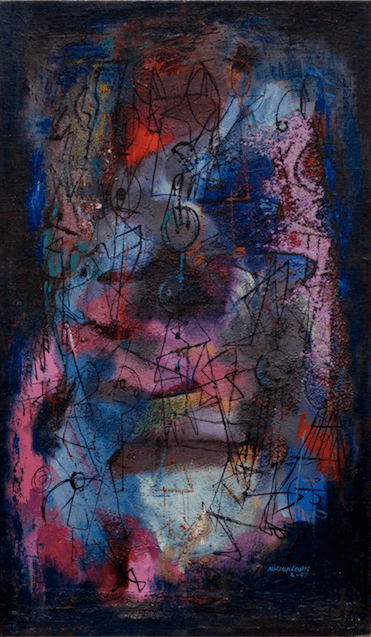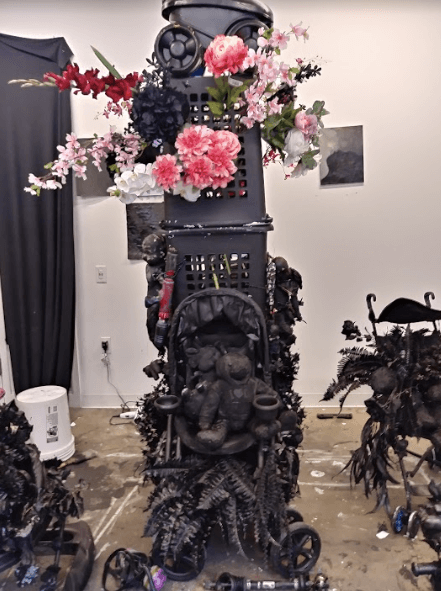Above: Kerry James Marshall at David Zwirner
Kerry James Marshall, Untitled (Large Colours), 2018
215.2 x 305.5 x 10.2 cm
David Zwirner is pleased to present Kerry James Marshall: History of Painting at the gallery’s London location. This will be the artist’s first exhibition of new work since his critically acclaimed retrospective, Mastry, and his second solo presentation with the gallery.
Through its formal acuity, Marshall’s work reveals and questions the social constructs of beauty, taste, and power. As the artist has written, “I gave up on the idea of making Art a long time ago because I wanted to know how to make paintings; but once I came to know that, reconsidering the question of what Art is returned as a critical issue.”1 Engaged in an ongoing dialogue with six centuries of representational painting, Marshall has deftly reinterpreted and updated its tropes, compositions, and styles, even pulling talismans from the canvases of his forebearers and recontextualizing them within a modern setting. At the center of his prodigious oeuvre, which also includes drawings and sculpture, is the critical recognition of the conditions of invisibility so long ascribed to black bodies in the Western pictorial tradition, and the creation of what he calls a “counter-archive” that reinscribes these figures within its narrative arc.
For this exhibition, Marshall has widened his scope to address the medium in its totality, exploring both the multiple ways that paintings can be made and, accordingly, how our reception of them is conditioned by context. As he explains, on the heels of the success of his retrospective, he found himself looking for the next logical step in his artistic production: “In a way, the title of the show is kind of a challenge to myself, a way back into the work in the studio after the public obligations associated with following the retrospective . . . With History of Painting, I want to at least take a stab at examining not only the origins of painting as a practice but also the endpoint of what paintings end up being after their original use has been exhausted.”2
In the works on view, Marshall moves through a progression of conceptions of paintings as objects that are created, exhibited, and circulated, not only examining the formal evolution of the medium but equally taking into account the history of our relationship with it. In Black Boy (2018), the artist revisits a basic exercise that is many children’s first introduction to making art and specifically to the idea of converting language into the image. Here, he has covered a ground of randomly applied, brightly hued paint with a thick layer of black paint, into which he has scratched the letters b o y, and then connected them to form the outline of a boy’s head.
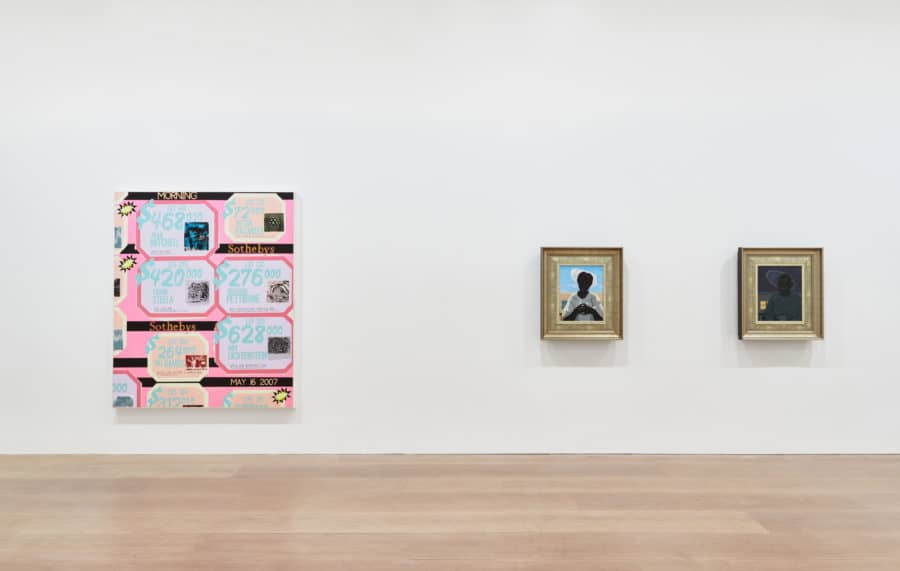
Above: Kerry James Marshall at David Zwirner.
In other works, Marshall foregrounds the ways in which paintings can come to express meaning. While some are experienced by viewers as sensory phenomena—for example, the large-scale canvas Untitled (Large Colours)(2018), in which Marshall fulfills French artist and writer Maurice Denis’s famous definition of paintings as merely flat surfaces covered with lines and colors in a specific order—other works, such as the identically sized Untitled (Underpainting) (2018), convey complex themes through their structure and content, requiring a different level of engagement. In the latter painting, Marshall begins with a layer of burnt umber paint, an underpainting technique frequently utilized by Renaissance masters to impart a warm brownish glow to the composition that is subsequently applied. In the image, black figures populate a salon-style museum, presumably arranged in accordance with an established art historical narrative. Groups of schoolchildren receive instruction, as other visitors look intently at artworks, while still others take in the whole scene. Through this tableau, Marshall both acknowledges the ways in which the history of art is told while questioning the place of black bodies within this pedagogy.
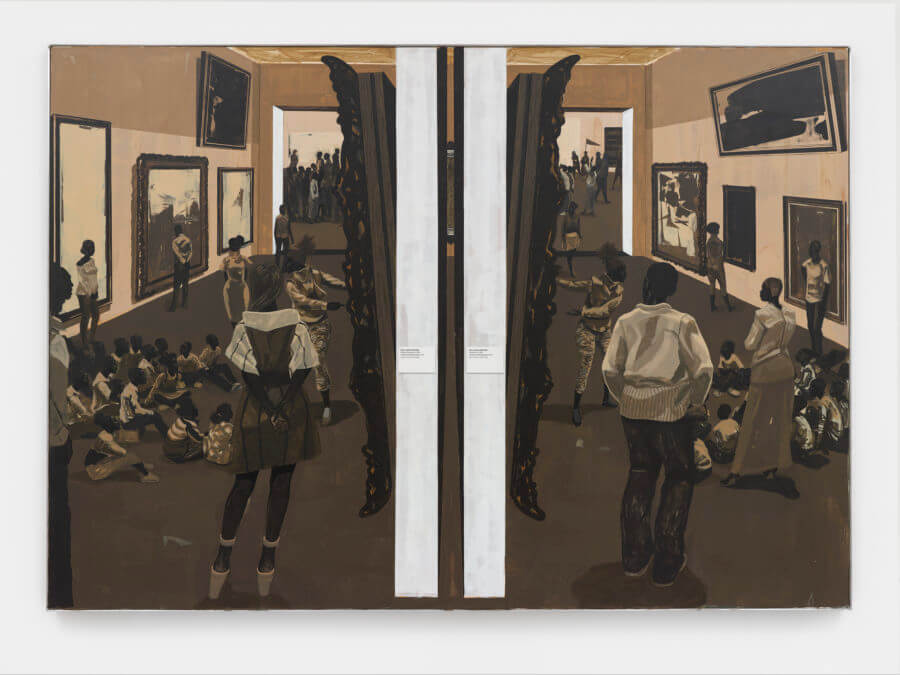
Above: Kerry James Marshall at David Zwirner
Kerry James Marshall, Untitled (Underpainting), 2018
215.2 x 305.5 x 10.2 cm
Finally, a group of paintings takes as its subject the way in which artworks are exchanged, emphasizing their ultimate fate as a commodity. Appropriating the format of the supermarket circular, Marshall replaces the everyday goods that would ordinarily be promoted on such fliers with auction results, each from a different auction house and day in early 2007, when the market had reached an apex. One painting depicts results from Swann Auction Galleries, notably one of the only houses to offer a sale of African American artists, while others make evident the relative absence of women from such contexts. Embedded within is a series of purely aesthetic formal choices that are in direct contrast with their content—for example, the invocation of color theory or a riff on neo-plastic composition that unconsciously affects the lens through which these works are seen. Titled History of Painting, they call attention to how value is created and assigned and how it influences the writing of history.
A fully illustrated catalogue, including new scholarship by Teju Cole and others, is forthcoming from David Zwirner Books.
